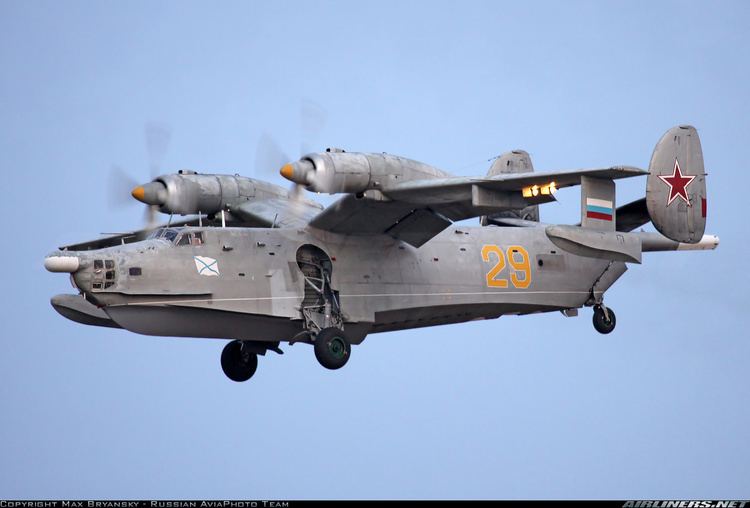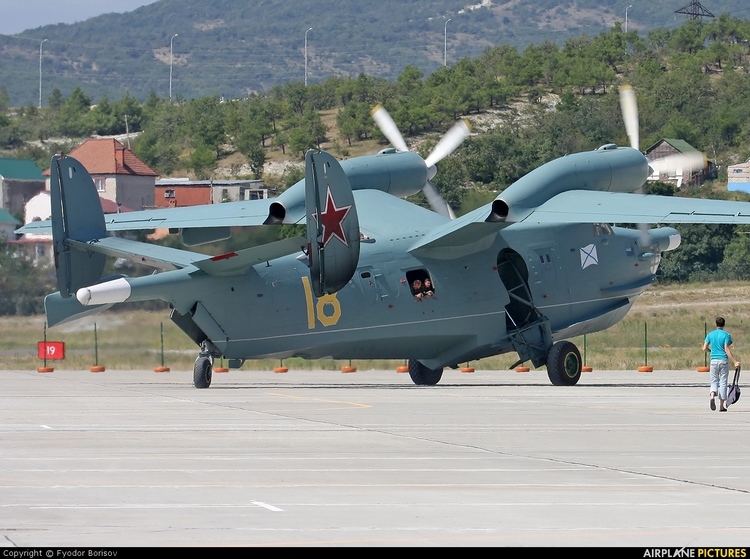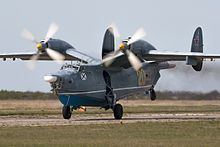Top speed 530 km/h Length 30 m First flight October 1960 Designer Georgy Beriev | Wingspan 30 m Introduced 1960 Manufacturer Beriev | |
 | ||
Beriev be 12 making of documentary made in the ussr
The Beriev Be-12 Chayka ("Seagull", NATO reporting name: Mail) is a Soviet turboprop-powered amphibious aircraft designed for anti-submarine and maritime patrol duties.
Contents
- Beriev be 12 making of documentary made in the ussr
- Beriev be 12
- Design and development
- Operational history
- Variants
- Operators
- Specifications Be 12
- References

Beriev be 12
Design and development

The Beriev Be-12 was a successor to the Beriev Be-6 flying boat, whose primary roles were as an anti-submarine and maritime patrol bomber aircraft. Though tracing its origins to the Be-6, the Be-12 inherited little more than the gull wing and twin oval tailfin configuration of the older aircraft. The Be-12 had turboprop engines, which gave it an improved speed and range over the Be-6. The Be-12 also had retractable landing gear, which enabled it to land on normal land runways, as well as water.

The Be-12 was first flown on October 18, 1960 at Taganrog airfield, and made its first public appearance at the 1961 Soviet Aviation Day festivities at Tushino airfield. A total of 150 aircraft were produced, in several variations, with production ending in 1973.
Operational history

The Be-12 entered service with Soviet Naval Aviation, or AV-MF (Aviatcia Voenno-Morskogo Flota), in the early 1960s in the maritime patrol role, and is one of the few amphibians still in military service in the world. Initially its role was ASW patrol, but when newer missiles enabled United States Navy submarines to launch from further offshore it was converted to the search and rescue role (Be-12PS). Small numbers are still in service. After the dissolution of the Soviet Union, some aircraft were converted to water bombers for the suppression of forest fires. During development of the Beriev Be-200 unique fire-fighting equipment was tested using a specially modified Be-12P, code-named "12 Yellow". After installation of the fire-fighting system, the aircraft was registered as RA-00046 and given the designation Be-12P-200. This modified Be-12 was also used to trial firefighting operations envisaged for the Be-200. According to figures released in 1993, the Russian Navy had 55 aircraft in service. By 2005 this had dropped to 12, and by 2008 there were only nine aircraft still in service. A surviving Be-12 is preserved at the Central Air Force Museum at Monino, outside of Moscow. Other examples exist at the Ukraine State Aviation Museum at Kiev, Ukraine and that the Taganrog Air Museum, in southern Russia.
Variants

Operators

Specifications (Be-12)
General characteristics
Performance
Armament
